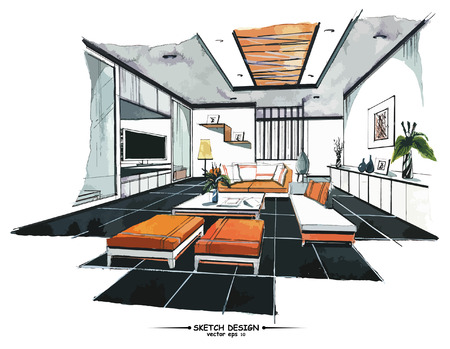Understanding the Value of Natural Light in UK Homes
Natural light is more than a simple design element—it is a vital contributor to our overall wellbeing, especially within the context of British homes. In the UK, where the climate is often characterised by overcast skies and shorter daylight hours during the winter months, making the most of available sunlight becomes essential for both physical and emotional health. Research consistently links exposure to daylight with improved mood, increased energy levels, and better sleep patterns. For those living across the British Isles, the interplay between architectural heritage and modern living creates unique challenges and opportunities for inviting daylight indoors. Embracing natural light in our homes not only enhances aesthetic appeal but also fosters a sense of warmth, connection to the outdoors, and a healthier living environment—qualities that are particularly cherished given the UKs distinctive seasonal variations.
2. Challenges of Daylight in British Architecture
When considering the integration of natural light within UK homes, several distinctive challenges emerge due to both environmental and architectural factors. The British climate is renowned for its frequent overcast skies, resulting in lower levels of sunlight compared to other European countries. This persistent cloud cover can significantly reduce daylight penetration, making it difficult for interiors to feel bright and uplifting throughout the year.
In addition to environmental conditions, traditional British architecture often poses its own set of obstacles. Many period properties feature smaller windows, thick masonry walls, and deep room layouts which were historically designed for insulation rather than illumination. These characteristics can limit the amount of daylight that reaches interior spaces, especially in densely built urban environments where buildings are closely positioned.
Common Daylight Challenges in UK Homes
| Challenge | Description | Impact on Wellbeing |
|---|---|---|
| Overcast Weather | Frequent cloudy skies lead to reduced sunlight hours and intensity. | Diminished mood, increased reliance on artificial lighting. |
| Small Windows | Traditional sash or casement windows limit daylight entry. | Darker interiors, feeling of confinement. |
| Thick Walls | Solid stone or brick construction restricts light diffusion. | Poor light distribution in deeper rooms. |
| Narrow Streets | Tightly packed terraces block light at lower floors. | Shadowed ground floors, uneven natural light access. |
Understanding these unique challenges is essential for any homeowner or designer aiming to maximise natural light. Addressing them requires a blend of thoughtful design interventions and an appreciation for the historic character of British homes, ensuring that modern wellbeing needs are balanced with heritage preservation.

3. Design Strategies for Maximising Daylight
In the unique climate of the UK, where overcast skies and shorter days are commonplace, thoughtful design approaches are essential to harness every ray of natural light. Whether you’re renovating a Victorian terrace or designing a contemporary new-build, there are clever techniques to draw more daylight into your living spaces, supporting both wellbeing and comfort.
Window Placement: Positioning for Optimum Light
The strategic placement of windows is key to maximising daylight. In British homes, south-facing windows are particularly prized, as they capture the most consistent sunlight throughout the day. Consider enlarging existing window openings or adding new ones where possible, especially on south and west elevations. For terraced or semi-detached properties, bay windows or corner glazing can help expand the reach of daylight deeper into rooms that might otherwise feel enclosed.
Light Wells: Bringing Sunlight to Lower Levels
For homes with basements or garden-level rooms—a common feature in many UK properties—light wells can be transformative. By excavating space adjacent to below-ground rooms and installing glazed panels or French doors, you invite sunlight to penetrate what would otherwise be shadowed spaces. This not only brightens interiors but also connects these rooms visually with outdoor greenery, enhancing both mood and spatial flow.
Choosing Window Treatments: Balancing Privacy and Brightness
Selecting appropriate window treatments is crucial in the UK, where privacy often needs to be balanced with the desire for natural light. Sheer voiles or linen blinds allow soft daylight to diffuse gently while maintaining seclusion from neighbouring properties. For period homes, shutters offer a timeless solution—when tilted just so, they permit light entry while shielding interiors from prying eyes. Avoid heavy drapery where possible, as it can block precious light even when drawn back.
Layering Surfaces for Reflection
To further amplify daylight, consider finishes and colours that reflect rather than absorb light. Pale paints, glossy tiles, and mirrors placed strategically opposite windows can make compact UK rooms feel airier and more expansive. These subtle design moves work harmoniously with architectural enhancements to ensure every corner benefits from Britain’s ever-changing daylight.
Conclusion: Designing with Light in Mind
By integrating considered window placements, inventive use of light wells, and carefully chosen treatments and finishes, homeowners across the UK can transform their living environments. The result is a home that feels brighter year-round—supporting wellbeing, energy efficiency, and the timeless pleasure of sunlit British interiors.
4. Material and Colour Choices for a Light-Filled Space
When it comes to maximising natural light in UK homes, the careful selection of materials and colour schemes is essential. British interiors often contend with overcast skies and shorter days, making every ounce of daylight precious. Thoughtful use of finishes, reflective surfaces, and harmonious palettes can transform even the gloomiest room into an uplifting sanctuary.
Reflective Surfaces: Amplifying Daylight
Mirrors and glossy finishes are particularly effective in bouncing available sunlight throughout your space. Incorporating glass, polished metals, or lacquered cabinetry helps distribute light more evenly, reducing dark corners typical in traditional British architecture. Opting for large wall mirrors or mirrored splashbacks in kitchens and hallways further boosts brightness without sacrificing style.
Colour Palettes: Choosing the Right Tones
The quintessentially British love of muted tones pairs perfectly with strategies to enhance daylight. Lighter hues such as soft whites, gentle greys, and subtle pastels reflect light rather than absorb it, visually expanding compact spaces common in UK homes. Below is a quick guide to choosing colours that complement natural light:
| Area | Recommended Colours | Effect on Light |
|---|---|---|
| Living Room | Pale oatmeal, eggshell blue, warm ivory | Brightens and creates an inviting atmosphere |
| Bedroom | Dove grey, blush pink, sage green | Softens light for a restful ambiance |
| Kitchen/Dining | Crisp white, cool mint, buttery cream | Enhances clarity and spaciousness |
| Hallway/Staircase | Soft taupe, chalk white, pastel yellow | Opens up narrow areas with reflected light |
Material Finishes: Texture Meets Functionality
The tactile quality of your chosen materials can also influence how light interacts within your space. Matte finishes offer a gentle diffusion of daylight, minimising harsh glare while retaining a modern look. Semi-gloss paints on skirting boards or woodwork subtly reflect light upwards without overwhelming the eye. For floors, consider pale oak or lightly limed timber—timeless choices that celebrate both heritage and luminosity.
A Harmonious Approach for UK Homes
The synergy between material finishes, colour palettes, and reflective elements is crucial for creating a home that feels open and positive year-round—even when the British weather is less than cooperative. By curating these design elements thoughtfully, you can harness every drop of daylight and foster true wellbeing at home.
5. Daylight and Wellbeing: Connecting Mind and Space
In the UK, where overcast skies and short winter days are commonplace, the relationship between natural light and wellbeing is especially significant. Scientific research has consistently shown that increased exposure to daylight helps regulate our circadian rhythms, which in turn supports better sleep quality and overall mood. For instance, a study by the University of Exeter found that people living in homes with more natural light reported higher levels of happiness and lower rates of depression. This is particularly relevant in British homes, where architectural features such as bay windows, skylights, and open-plan layouts can be harnessed to maximise daylight penetration.
The Science Behind Sunlight
Daylight stimulates the production of serotonin, often referred to as the feel-good hormone, which plays a crucial role in mental health. In the darker months typical of the UK climate, insufficient sunlight exposure has been linked to Seasonal Affective Disorder (SAD), a condition affecting thousands each year. Maximising daylight through smart design choices—like choosing lighter wall colours or strategically placing mirrors—can make tangible improvements to daily mood and energy levels.
Lifestyle Benefits Unique to the UK
Incorporating more natural light into British homes doesn’t just uplift interiors; it also encourages healthier routines. Ample daylight invites residents to engage with their surroundings: reading by a sunny window, enjoying breakfast in a well-lit kitchen, or nurturing indoor plants that thrive in sunlit corners. Furthermore, urban British dwellings benefit from communal outdoor spaces like courtyards and balconies, designed to catch precious sunlight even on shorter days.
A Harmonious Connection
The synergy between mind and space becomes apparent when homeowners prioritise daylight within their living environments. Not only does this approach align with modern design trends focused on wellbeing, but it also creates interiors that feel uplifting, spacious, and uniquely attuned to the rhythm of British life. By celebrating natural light as a vital element in home design, we nurture both our physical spaces and our sense of wellness throughout the changing seasons.
6. British Case Studies: Real-Life Light-Focused Transformations
To truly appreciate the transformative impact of natural light in UK homes, lets explore several inspiring case studies where thoughtful design interventions have brought about remarkable changes in everyday living environments.
Victorian Terrace in London: Bringing Sunshine into Narrow Spaces
A classic Victorian terrace in North London faced the all-too-familiar challenge of narrow rooms and limited daylight. By introducing a large skylight above the kitchen extension and installing Crittall-style glazed doors opening onto the garden, the homeowners created a luminous flow from front to back. Subtle use of pale paint colours and reflective surfaces further amplified the daylight, turning what was once a gloomy corridor into a vibrant, inviting heart of the home.
Edinburgh Flat: Maximising Light with Minimalist Design
In an Edinburgh tenement flat, clever removal of non-structural walls opened up compact living spaces, allowing sunlight from tall sash windows to travel deeper indoors. The interior palette leaned towards off-whites with warm undertones, while sheer linen curtains provided privacy without compromising brightness. The transformation not only improved wellbeing but also highlighted how simple changes can make period properties feel more contemporary and uplifting.
Cornish Coastal Cottage: Embracing Sea Views and Sunlight
On the Cornish coast, a traditional stone cottage was reimagined by replacing small windows with larger, triple-glazed units that frame panoramic sea views. A new sunroom, featuring a fully glazed roof, became a sanctuary for reading and relaxation—even on grey days. Timber floors and natural textures echoed the surrounding landscape, creating an effortless connection between indoors and out while maximising every drop of available daylight.
Bristol Loft Conversion: Innovative Use of Rooflights
For a young family in Bristol, converting their loft meant not only gaining extra space but also transforming their home’s relationship with sunlight. By strategically placing Velux windows along the sloping roofline and opting for open-plan layouts, the upper floor became bathed in soft morning light. Integrated storage solutions preserved clean sightlines, ensuring daylight could move unimpeded throughout the space.
These examples showcase how UK homeowners are creatively overcoming architectural constraints and unpredictable weather to harness the power of natural light. With careful planning—whether it’s through structural changes or subtle design tweaks—any home can become brighter, healthier, and more uplifting for everyday living.

